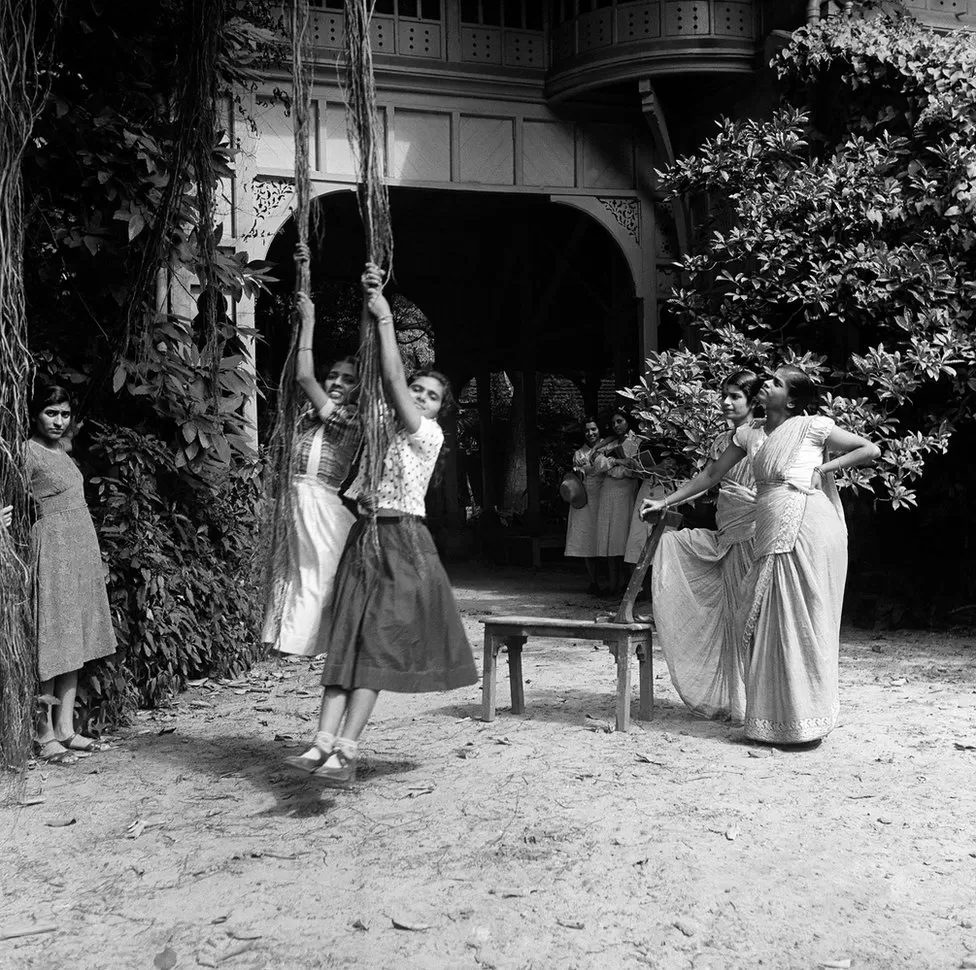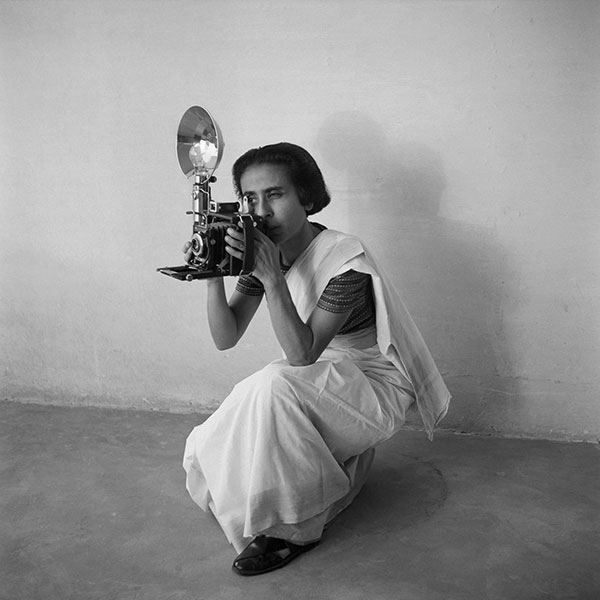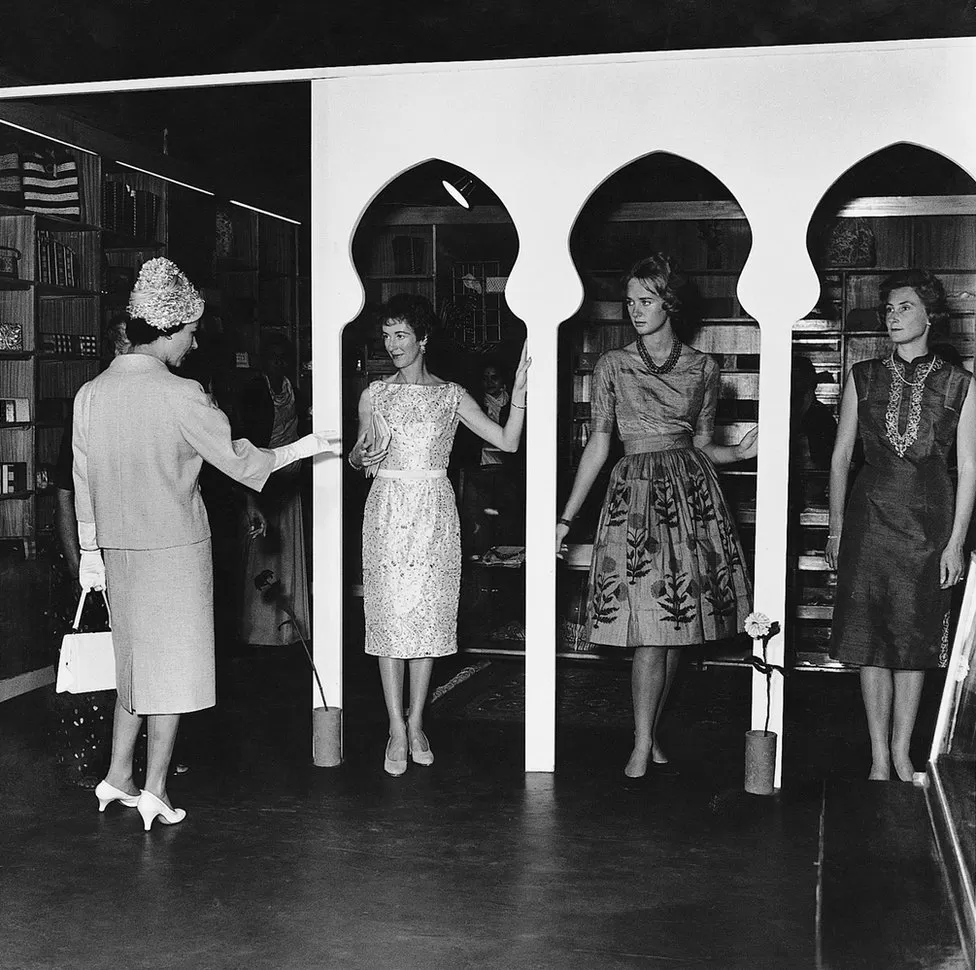Discover 9 Indian Landscapes Through Modernist Lens
India’s rich and diverse topography has served as inspiration for artists throughout time. With awe-inspiring sites and landforms ranging from...
Guest Profile 4 July 2024
Renowned for her groundbreaking achievements, Homai Vyarawalla (1913-2012) left an indelible mark as a trailblazer in the field of photojournalism. Breaking barriers as India’s first female photojournalist, Vyarawalla’s lens bore witness to the historic moments of British colonial rule’s demise, capturing the nation’s journey toward independence.
Born on December 9, 1913, in the western Indian state of Gujarat, Homai Vyarawalla’s early years were marked by constant motion. Since Vyarawalla’s father was an actor in a traveling theater group, she had a nomadic childhood until the family settled in Mumbai (then Bombay). There, she pursued her education at the renowned JJ School of Art. It was during her college years that she crossed paths with Manekshaw Vyarawalla, a freelance photographer who would become her husband. Through him, she discovered her passion for photography, setting the stage for her remarkable career.

Homai Vyarawalla’s journey into photography began already during her college years, 1930s, The Alkazi Collection of Photography, Delhi, India.
I hadn’t the slightest clue I would be a photographer. I wanted to be a doctor but that was the only time in my life that my mother refused to let me do something. She had seen doctors on late-night shifts and didn’t want me in a profession like that. Little did she realize that press photography would be far worse!
Gaining prominence with her captivating snapshots of Mumbai life, Homai Vyarawalla’s lens caught the eye of readers when her work was featured in The Illustrated Weekly of India magazine. Accordingly, Vyarawalla was breaking barriers as she became one of India’s pioneering female contributors to mainstream publications. Homai Vyarawalla skillfully documented the bustling rhythms and vibrant tapestry of daily existence in the city through her evocative imagery.

Homai Vyarawalla, A fox hunt in Delhi led by Col. Sahni, early 1940s, The Alkazi Foundation for the Arts, Delhi, India. Wikimedia Commons (public domain).
Initially, her photos were published under her husband’s name before she adopted her pseudonym “Dalda 13”. Vyarawalla seized upon the undervaluation that women encountered as journalists and created captivating and unrestricted photographs. According to Vyarawalla, the lack of respect given to women in the journalism industry allowed her to freely capture candid, high-quality images of her subjects.

Homai Vyarawalla, Mr Nehru and the wife of a British Diplomat, 1958, The Alkazi Foundation for the Arts, Delhi, India.
The Vyarawallas relocated to Delhi in 1942 when they became the photographers for the British Information Service. Homai Vyarawalla was among the scarce female photojournalists in Delhi during that era. Sources describe how she became a familiar sight, traversing the capital on her bicycle with her camera securely fastened to her back.

Photo of Homai Vyarawalla, The Alkazi Foundation for the Arts, Delhi, India.
Homai Vyarawalla’s lens captured pivotal political figures and significant events during India’s quest for independence, rapidly garnering her national recognition. Her portfolio ranged from candid snapshots of Jawaharlal Nehru, her preferred subject, to poignant portraits of Mahatma Gandhi. She also recorded images of Indira Gandhi, India’s inaugural female Prime Minister.

Homai Vyarawalla, Mahatma Gandhi (left), and independence leader Khan Abdul Ghafar Khan (right) arrive at a meeting where the decision to partition the country was made, March 1947, The Alkazi Foundation for the Arts, Delhi, India.
In addition to her extensive coverage of political figures, her repertoire comprises intimate, close-up portraits. This also included notable personalities who visited India in the post-independence era like Queen Elizabeth II and John F. Kennedy. Among them were also very prominent figures like China’s inaugural prime minister, Zhou Enlai, and Vietnamese leader Ho Chi Minh.

Homai Vyarawalla, Queen Elizabeth at a fashion show in Delhi, 1961, The Alkazi Foundation for the Arts, Delhi, India.
Homai Vyarawalla’s remarkable photographic legacy finds a permanent home in The Alkazi Foundation for the Arts, situated in Delhi. A retrospective exhibition was jointly organized by the foundation and the National Gallery of Modern Art, Mumbai (NGMA) in 2010. Her extraordinary achievements were further honored when she was conferred with the Padma Vibhushan, India’s second-highest civilian award, in 2011.

The President, Smt. Pratibha Devisingh Patil presenting the Padma Vibhushan Award to Smt. Homai Vyarawalla, at an Investiture Ceremony II, at Rashtrapati Bhavan, in New Delhi, April 01, 2011. Wikimedia Commons (public domain).
Through her lens, Homai Vyarawalla captured pivotal moments of India’s struggle for independence and its subsequent transformation into a sovereign nation. Vyarawalla’s photography not only documented historical events but also provided a unique perspective on the social and cultural fabric of India during that time. Her pioneering spirit and determination were breaking barriers and paving the way for women in a male-dominated industry.
DailyArt Magazine needs your support. Every contribution, however big or small, is very valuable for our future. Thanks to it, we will be able to sustain and grow the Magazine. Thank you for your help!